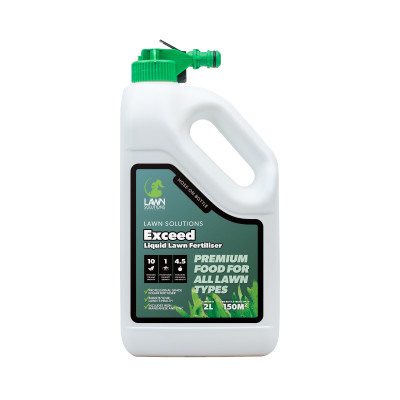The most noxious lawn weeds (nutgrass + others)
As the name suggests, noxious lawn weeds grow aggressively and can spread rapidly with few control options. These weeds can appear in even the most well-maintained lawns and can take over quickly.
To help you, we have put together a list of the most common noxious weeds and what you can do to remove them.
Nutgrass
Nutgrass belongs to the sedge weed family and can be identified by a lighter green leaf that will grow taller than the rest of your lawn. It has 3 leaf blades that shoot up from a triangular stem.

How does nutgrass spread?
Nutgrass spreads by a series of bulbs on the underground rhizomes which grow to create new plants. One plant can produce multiple of these bulbs at one time. These bulbs can remain inactive for up to 10 years until they become disturbed and can be activated simply by an addition of nutrients or water.
When nutgrass matures, it can produce a series of seeds. Most common weeds will spread by its seeds, however only a very small portion of nutgrass will spread this way.
Treatment
So, how do I get rid of nutgrass?
It is best to act as soon as possible to help stop the spread throughout your lawn. If there is only a small amount present, you can dig the plant out by hand using a small spade. When removing nutgrass this way, be extremely careful to make sure that there are no roots, rhizomes, or bulbs left in the soil.
What do I do if the nutgrass has already spread?
When there is a larger amount of nutgrass in the lawn, a treatment with a selective herbicide such as Sedge Control is the best option. Be aware, when using these products, repeat applications may be needed for a full knockdown. Although these products are on the expensive side, only a small amount is usually needed to treat the affected area. If you decide to not treat these weeds, they will continue to grow and invade your whole lawn. So, purchasing an herbicide is definitely worth the investment.
Onion Weed
Onion weed can be a troublemaker in many lawns and garden beds. It is one of the most difficult to get rid of and can spread throughout your yard quickly. Onion weed gets its name from its bulb as it gives off an onion smell when crushed. It can be identified by its thin green strappy leaves which grow from a white bulb.
Treatment
The best way to remove onion weed is to dig the weed-clump out and throw the entire clump away. When digging these out, best to either use a spade or trowel to remove all the plant and roots. It is best to not pull these weeds out by hand as bulbs can remain in the soil. When these bulbs are left in the soil they can continue to grow into new weeds.
Another method is to use a non-selective herbicide. As onion weed does have a waxy leaf, a surfactant or a slight amount of household detergent will help the herbicide stick. When using a non-selective herbicide, carefully apply using a small paintbrush or weed wand to target the onion weed and avoid your lawn.
Paspalum
Paspalum has a series of broadleaf leaves that stem from a central crown. It spreads from its sticky seeds which are usually transported by birds, shoes, clothing and animals.

Treatment
As paspalum doesn’t contain any underground bulbs, it can be removed by hand. When removing, make sure you dig underneath the crown to remove the entire root of the plant.
If the paspalum has spread throughout the lawn, you may want to look at using a selective herbicide like Paspalum, Nutgrass and Clover Weed Killer. Repeat applications may be needed to fully eradicate paspalum from your lawn.
*For kikuyu and buffalo lawns only spot treat and do not spray the entire lawn as it can harm the grass as well.
Red Caustic Weed
Red Caustic Weed has reddish purple leaves with stems that contain a sappy white milk. These can be found in thin and sparse lawns, garden beds, and cracks between concrete.

Treatment
Red Caustic Weed can be treated with a broadleaf herbicide such as All Purpose Weed Control and Bin Die. Please note, repeat applications may be needed 7-10 days later to ensure the weed is properly treated.
For areas that are not surrounded by other plant material, it is best to use a non-selective herbicide such as roundup. However, you will need to make sure that you don’t apply it to any other plant material which you are wanting to keep.
For more information on other lawn weeds not mentioned in this blog, check out our other blogs on weeds here.


